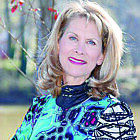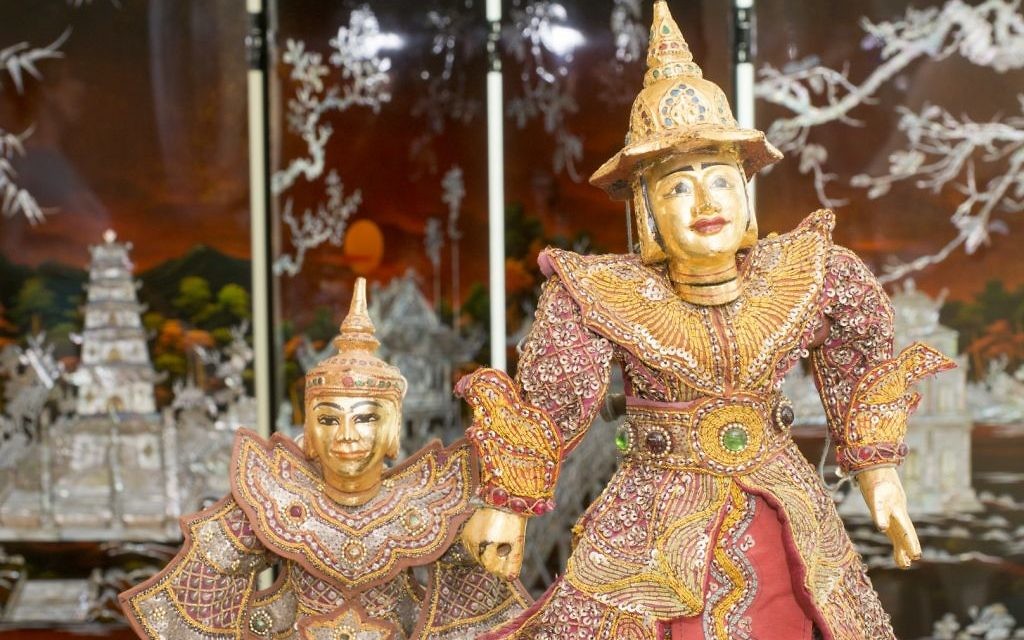Chai-Style Homes – Exotics from the Far East
Rickshaw into Buckhead
Marilyn and Sam Eckstein have deep roots in Asia. Sam was a Marine there in 1948; Marilyn first visited Canton in 1969. Both returned with carefully packed tea sets, screens, jade and ivory.
Their combined art in their Buckhead condominium complements the historical collection of Marilyn’s family. Her father, attorney Paul Ginsberg, was appointed by President Harry Truman in 1952 as a special emissary to the Orient, Yugoslavia and Germany. Ginsberg’s follow-up book was “Wake Up, America.”
Get The AJT Newsletter by email and never miss our top stories Free Sign Up
Jaffe: What exactly did your father do for Truman?

Marilyn: Back then, the United States was keenly interested in the spread of communism and what countries would align with that movement. The State Department set up meetings for Dad with the leaders of all these countries. After his 1952 trip, he reported back to the president. On that trip, Dad procured this ivory (now illegal) as a gift from Chiang Kai-shek, this silver letter opener from General Marshal Tito, and this cigarette box from Prime Minister Nehru. This ivory piece and Baccarat crystal I inherited from my Uncle Max Cuba (a local CPA and philanthropist). The jade bird and Buddha I received from my mother, Jean Cuba Ginsberg, Max and Joe Cuba’s sister. Other jade and ivory I bought during my four trips to the Orient.
Jaffe: What was China like back then?
Marilyn: On all my trips except the last, the Chinese used an abacus instead of calculators. In 1977 I went with a group from Harvard who had hard-to-acquire visas. China was just opening up to outsiders. We never had less than 20 people following us around. It was their first time seeing foreigners, blondes, dresses. (They were still in their Mao Zedong.) They did not have enough hotels, so they had to open places for us to stay. Some rooms had mattresses and no springs or vice versa. In the mornings hotel staff would come to the rooms to manually remove the unflushable toilets. Upon entering a hotel and checking out of the hotel, the staff formed a line outside to either welcome us or say goodbye. With the exception of breakfast, the food was impossible to eat, and we had to use chopsticks. Every meal had peas. Try picking up peas with chopsticks! I lived on peanut butter crackers. It was such a hard trip, all we could do was laugh. Contrasted to our 2009 trip, I was overwhelmed with the modernity of the hotels, services and food. I have to say I enjoyed my 1977 trip the most even with all its hardships.
Jaffe: The chess set is huge and so detailed.
Marilyn: It’s from Cochin, India, where chess was first played. Sam had to schlep it back in a wheelchair since it is so heavy. Each piece is hand-painted.
Jaffe: I just can’t figure out which one is the rook. Sam has indeed done some major transporting.
Sam: Before bubble wrap, in 1948 I brought back this tea service for six from a dangerous area off-limits to Americans (Shanghai), right when Mao Zedong’s army was entering. With a knife held at the neck of the cabdriver, I got back to my ship. Here’s the tea set, not a piece cracked or broken. I’m better than UPS.
Jaffe: So you both have the same taste?
Marilyn: Mostly, but this pearl-inlaid screen is a fun example. We had it custom-made in Vietnam. We couldn’t decide on the scenery and character arrangement, so we both designed it. Sam did one side, and I did the other. From time to time, we flip it over. One side depicts oxen and farmworkers; the other is more aesthetic with peaceful trees and women in Vietnam dress. You guess whose is which. It takes 100 days through 20 stages to create the lacquer ware.
Jaffe: What else do you have from the Cuba family?
Marilyn: Here is a photo of Mother and Max in 1910. I treasure this collage done by artist Elaine Pollock, combining my mother’s siblings: a family history in pictures. I still play with Mother’s ivory mahjong set. The bedroom Capodimonte (Italian) lamp is hers (1940), as well as the dining room rundles. The lamp shows a lascivious orgy. See them eating, frolicking, fanning themselves and reclining.
Jaffe: Reclining — maybe they are having a seder. … The front guest powder room has some dramatic pieces.
Marilyn: In China (1969), I rode on trains with old-fashioned doilies and traditional tea service and acquired these two panels, “8 Immortals Crossing the Sea,” illustrating that the ancients have to work together to achieve their goals. It’s an old Chinese fable about contributing individual strengths in their collective journey (still good advice now). These antique Burmese puppets were used by the royal family for entertainment. All the beading was hand-sewn.
Jaffe: What among your accessories would you say is your favorite?
Marilyn: We set out in the Istanbul Grand Bazaar years ago to find this particular set of antique, hand-painted poetry books framed here. Closely examine these tiny strokes of the picture within the picture. The brush must have been the dimension of a human hair. You can also determine authenticity because of the wormholes in the paper. Note two women playing the flute. Very rare to depict females.
Jaffe: So why surround yourself with all this? What are you trying to evoke?
Sam: Asian art is reminiscent of our life of travel. It is our signature from the Orient. Everything in this house has memories and meaning.
Jaffe: What’s next? Why not Cuba? Is that a Sephardic name?
Marilyn: No, it’s actually Kuberski from Lomza, Poland!
Bonus Photos: Exotics from the Far East






comments